Maya architecture is one of the most exceptional styles of architecture found in early civilizations. It has its roots in the Mesoamerican architectural style, with its most notable architectural structures being palaces and pyramids such as those found at El Tajin in the north and Copan in the south.
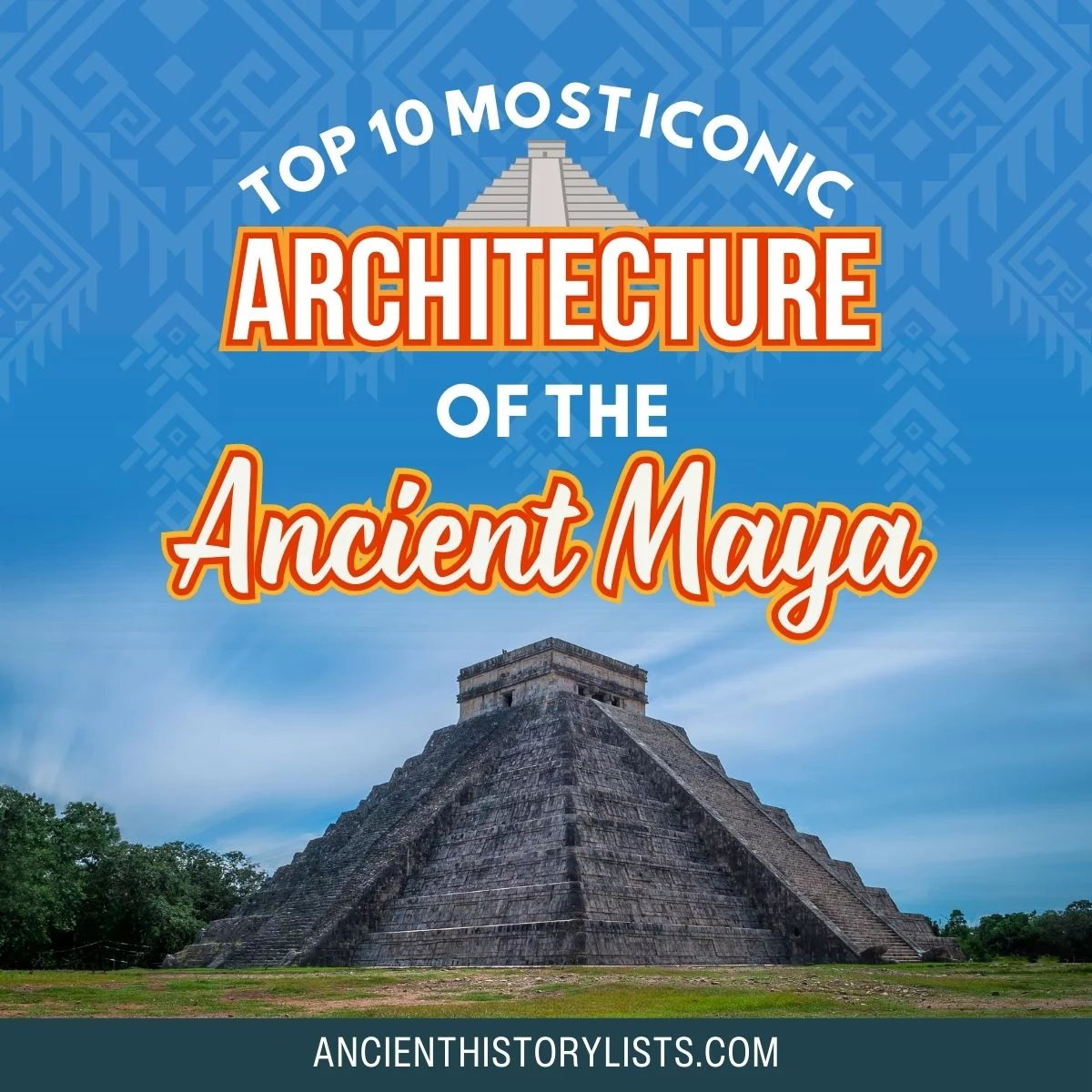
Being a provincial civilization, the Maya’s architecture varied little from state to state. Its key characteristics were multi-level elevated platforms, step pyramids, moldings of Mayan glyphs, and serpent marks on sculptures. The buildings were mainly made from limestone, sandstone, or volcanic rock, and the cutting tools were made from stone. These materials were readily available in the regions of Tikal, Palenque, and Copan.
1. Pyramids
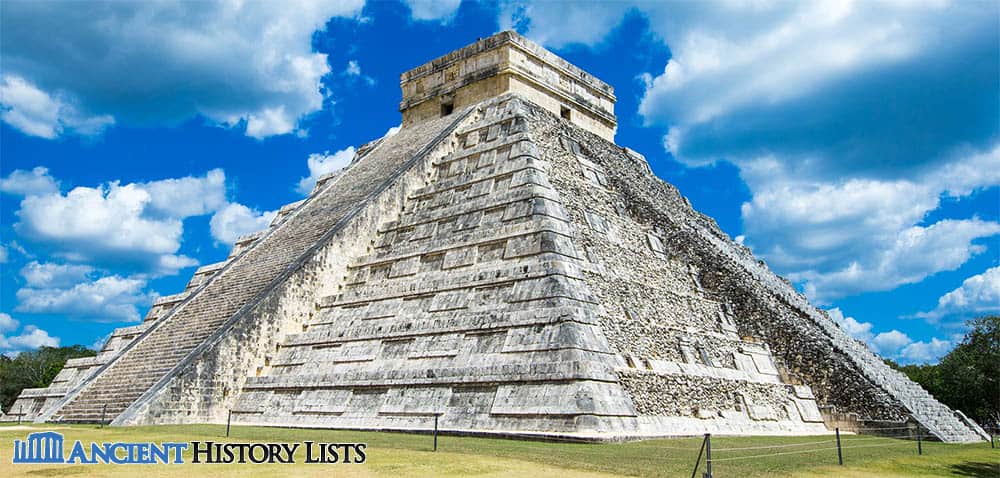
Pyramids were the Maya’s most significant structures and were built with curved stones acting as steps with rounded inset corners and chamfers around each platform. The pyramids were often built in jungle areas where the structures could soar high above the trees.
There were usually shrines to the gods at the top. The pyramids were mainly used as temples and religious meeting places, but they also acted as the tombs of deceased patrons, rulers and victims of sacrifice.
The Temple of the Inscriptions in the city of Palenque (see 10) is a perfect example of Mayan temple art. This structure has a steep staircase along a nine-chambered platform which represents the nine levels of Xibalba, or the underworld.
It also has a secret 13-way passage which reflects the 13 levels of heaven. The Pyramid of the Magician is another distinctive Maya structure. It is rounded at the corners, lending an almost oval shape to the pyramid. Tikal and Uxmal are other notable regions where much art and culture has been found.
2. Palaces

The palaces built during the Maya era were on a grand scale and were often used as centers of administration. These palaces were “corbelled” which is where a type of flat stone was piled up with a slight overlap to form a narrow gap to ensure they could be topped with a single capstone. Wooden crosses were used to support these unbalanced vaults.
The Nunnery Quadrangle building in Uxmal is one of the most significant pieces of architecture of this kind. The Nunnery Quadrangle was built as a temple pyramid from a traditional pattern. The north building has 13 doorways, the south has nine, and the west has seven. These doorways represent the levels of heaven, Xibalba and earth respectively. The palace at Palenque is also of the same category. This structure is a three-story monument with a unique design and attractive features such as beautiful carvings.
The palaces were constructed with portals which represented the way to a new world through the mouths of sacred caves. They also included restrooms, cooking areas, halls, and sleeping quarters. Some of them even had lavatories and steam rooms which hinted at a luxurious way of life.
3. E-Groups
The Maya civilization was rich in e-groups, mainly built in the southern and central lowlands of the region. An e-group is a stepped pyramid structure which was built on a raised west-facing platform. On the eastern side, there was another type of raised and elongated platform with a staircase to provide entry. The western side of the e-group also held thatched buildings with staircases.
These groups were used as astronomical observatories, and their construction was dictated by the equinoxes and solstices which were important religious events. The e-groups found in Uaxactun city were namely Temple E-I, Temple E-II, and Temple E-III and each one represented the customs of the Classic period. E- groups were constructed by the nobles and were therefore well appointed and built with great care.
4. Ball Courts
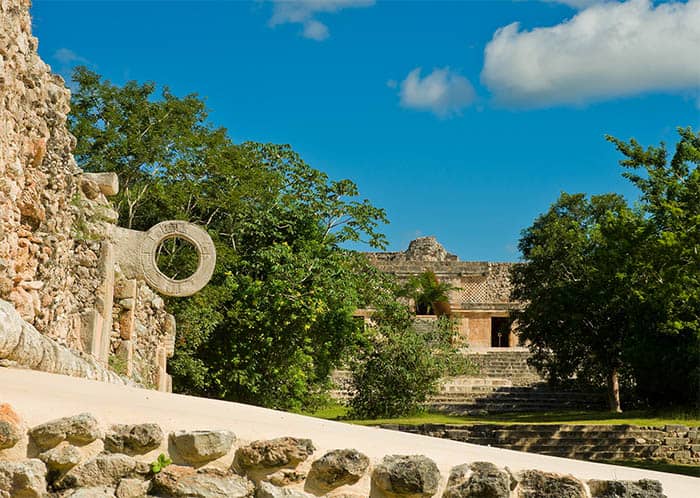
Ball courts, as the name suggests, were used to play traditional Mesoamerican ball games. The games had their own rules and regulations where two teams tried to bounce a rubber ball through a ring without using their arms and legs.
The ball court usually had sloping sides, but in Uxmal, the sides were vertical; in Tikal, the court was a triple court and the walls were L-shaped. The ball games were believed to be based on religion, and the courts were built with their sacred nature in mind.
The games were played from north to south, and the loser of the game had to make a sacrifice to the gods. The sport was particularly popular in Copan.
5. Triadic Pyramids
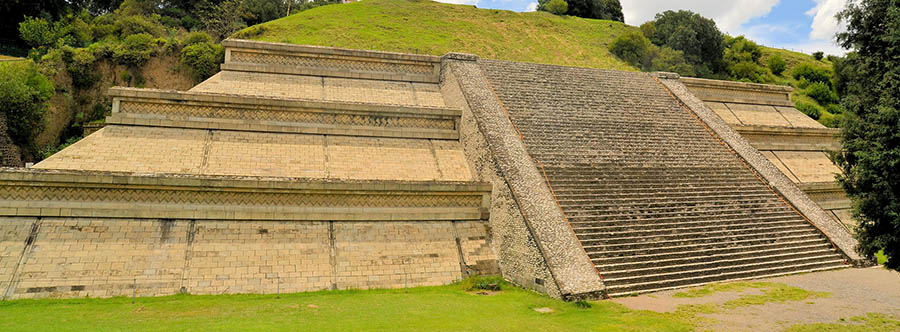
Triadic pyramids were found in abundance during the Preclassic period. They were built on a single platform made of concrete and sandstone and were inspired by the e-groups.
Triadic pyramid architects also built a stairway from the bottom platform to the top of the pyramid for easy access. They were supported by small, inward-facing buildings on each side. Most triadic pyramids were found at Nakbe and Peten, but El Mirador is also mentioned as having around 88 triadic pyramids.
6. Temples
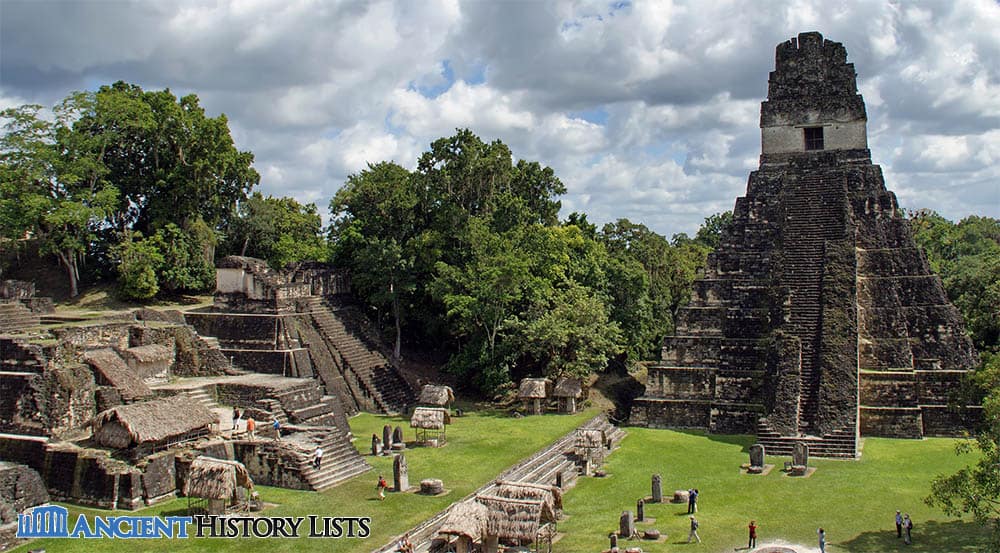
Temples were prolific in Maya civilization. They were made from stone and had platforms of varying sizes and shapes. These platforms had wood-and-thatch structures built upon them. Mainly used for ceremonial purposes, the temples had a high top platform where rituals could be performed. The outer surfaces of the stones were adorned with carvings and glyphs.
The temples were built with astronomical concepts and traditions in mind, and most were aligned with heavenly bodies such as the sun, the moon, or Venus. Equinoxes and solstices played a major role in the temples’ construction as they were important for rituals.
Temple IV in the city of Tikal is one of the tallest architectural structures from the Mayan period. It comprises two causeways from the northeast and east. The Tozzer Causeway runs from the east while the Maudslay Causeway runs from northeast to the north. Temple IV was built to commemorate Yik’in Chan K’awiil, the 27th ruler of the dynasty, as part of his funeral celebrations.
There is a shrine present in the temple which is believed to be dedicated to Yik’in Chan K’awiil. It is extraordinary in its construction, being a vertical structure that stands in sharp contrast to the rest of the pyramid.
7. Pigeon House
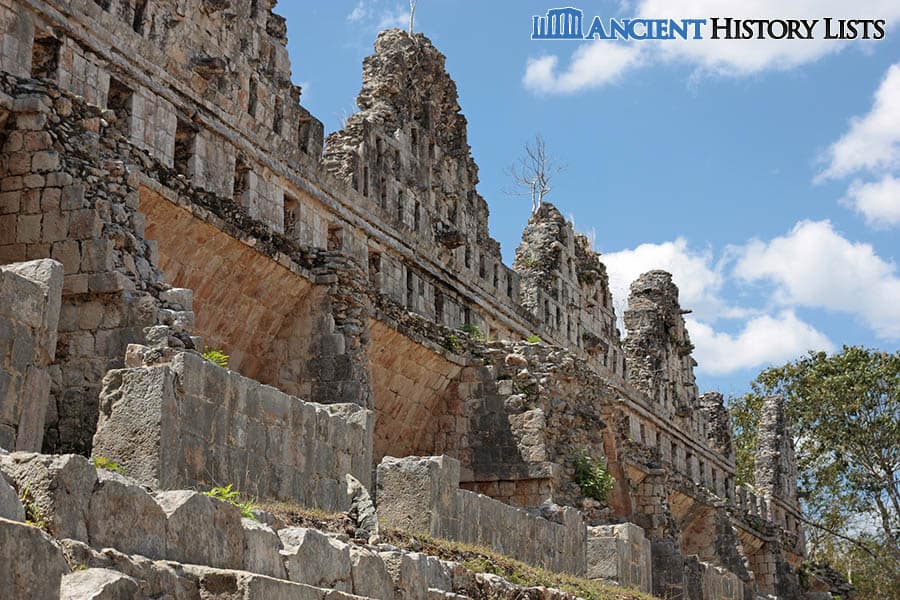
The Pigeon House at Uxmal was built mainly for ceremonial purposes similar to those conducted at the temples, and it was built from rubble and limestone during the early period of the civilization.
Just like many other structures, the Pigeon House’s exterior and interior walls were carved, and all the walls were painted in bright colors. It was also believed to be have been built to track the course of the heavenly bodies and supernatural forces.
8. Chichen Itza
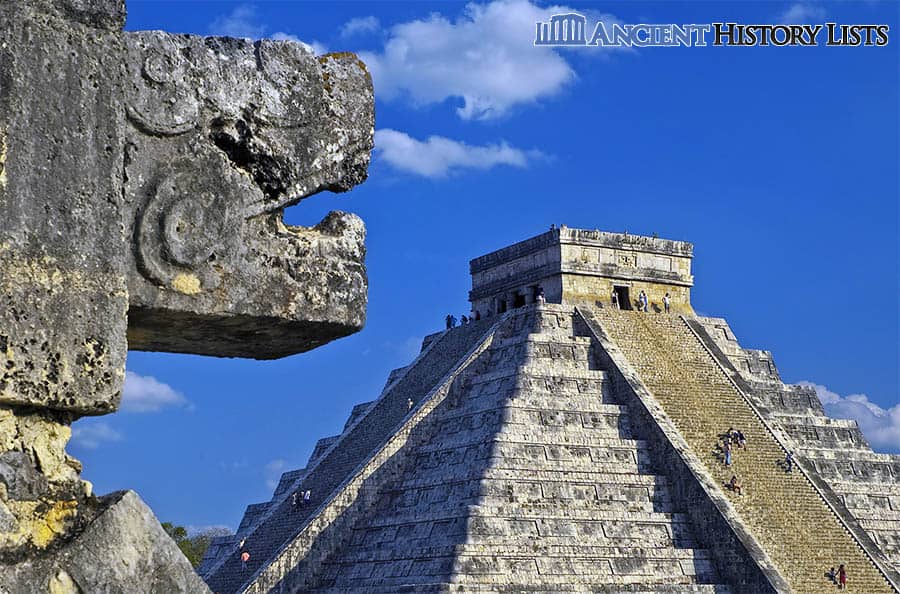
Chichen Itza is a renowned architectural miracle of the Maya civilization. It was a sacred site, and many people traveled there in pilgrimage. One of its most famous attractions is the Sacred Cenote, a natural sinkhole which has been linked to human sacrifices made to Chaac, the god of rain.
Chichen Itza was bifurcated into sections and was built in the Classic period’s Puuc architectural style. The iconic El Castillo, or temple pyramid, is the most famous landmark on the Chichen Itza site.
El Castillo is a massive pyramid at the Chichen Itza site, built of hard stones such as concrete, limestone, and graphite. The pyramid was constructed in honor of the god Kukulcan who was a serpent deity. It has inscribed square pegs all over its structure and a staircase to reach the top of the pyramid.
As it was built to serve a serpent deity, its walls were carved with serpent designs which run from top to bottom. El Castillo’s thousands of visitors have all noticed the shadow effect on the serpent carvings which makes it look as though the serpents are slithering down towards the bottom of the pyramid.
9. Sayil Palace

Sayil Palace is one of the oldest palaces in Maya history. The palace is a three-story building with each story set back from the one below. Instead of stacking the rooms one above the other, they were built side by side.
The whole palace was made from stone and concrete in the Puuc architectural style. The building known as El Mirador on the site is believed to have been used as an observatory.
10. Temple of the Inscriptions
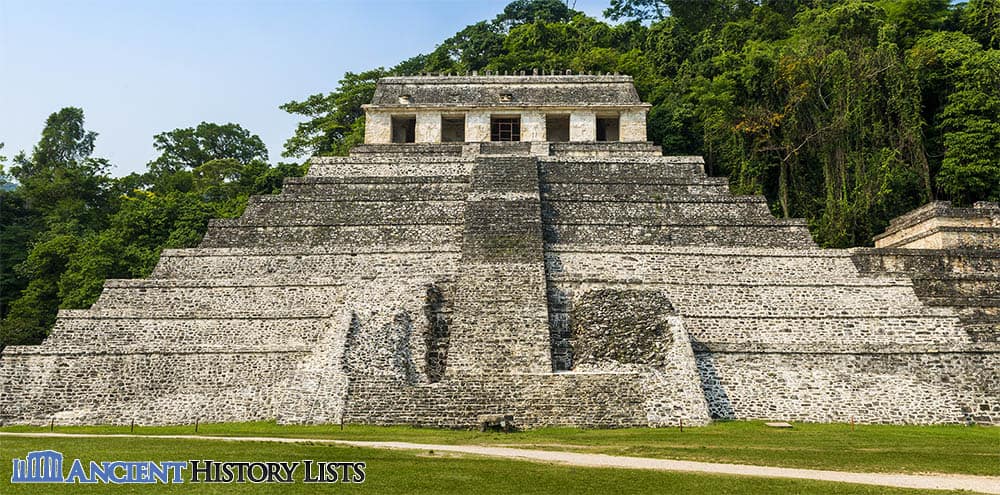
The Temple of the Inscriptions is the largest stepped pyramid in the region, situated in the heart of Palenque. It was built to commemorate the ruler K’inich Janaab’ Pakal. It is one of the best sources of archeological information of the Maya civilization with the inscriptions on its walls telling us much about this great civilization.
It has five entrances at the front with carved walls, and the staircase was built to reach the crypt situated at a higher level. Various tablets have been found in the temple which tell us how the Maya understood the notion of time.
Conclusion
The Maya civilization was, without doubt, a significant contributor to ancient architecture. The civilization had very strong traditions, beliefs, and customs, and its temples and pyramids were all constructed from the same materials and with the same purposes in mind.
Even the tombs of their rulers and other dignitaries, and the shrines dedicated to the gods, followed these same patterns. Structures such as the great ball courts give us an insight into the leisure activities of the Maya, and their observatories show us how firmly they believed in the effect of the planets and heavenly bodies on their daily lives. The most prominent structures can be found at Tikal, Palenque, Calakmul, and Chichen Itza.